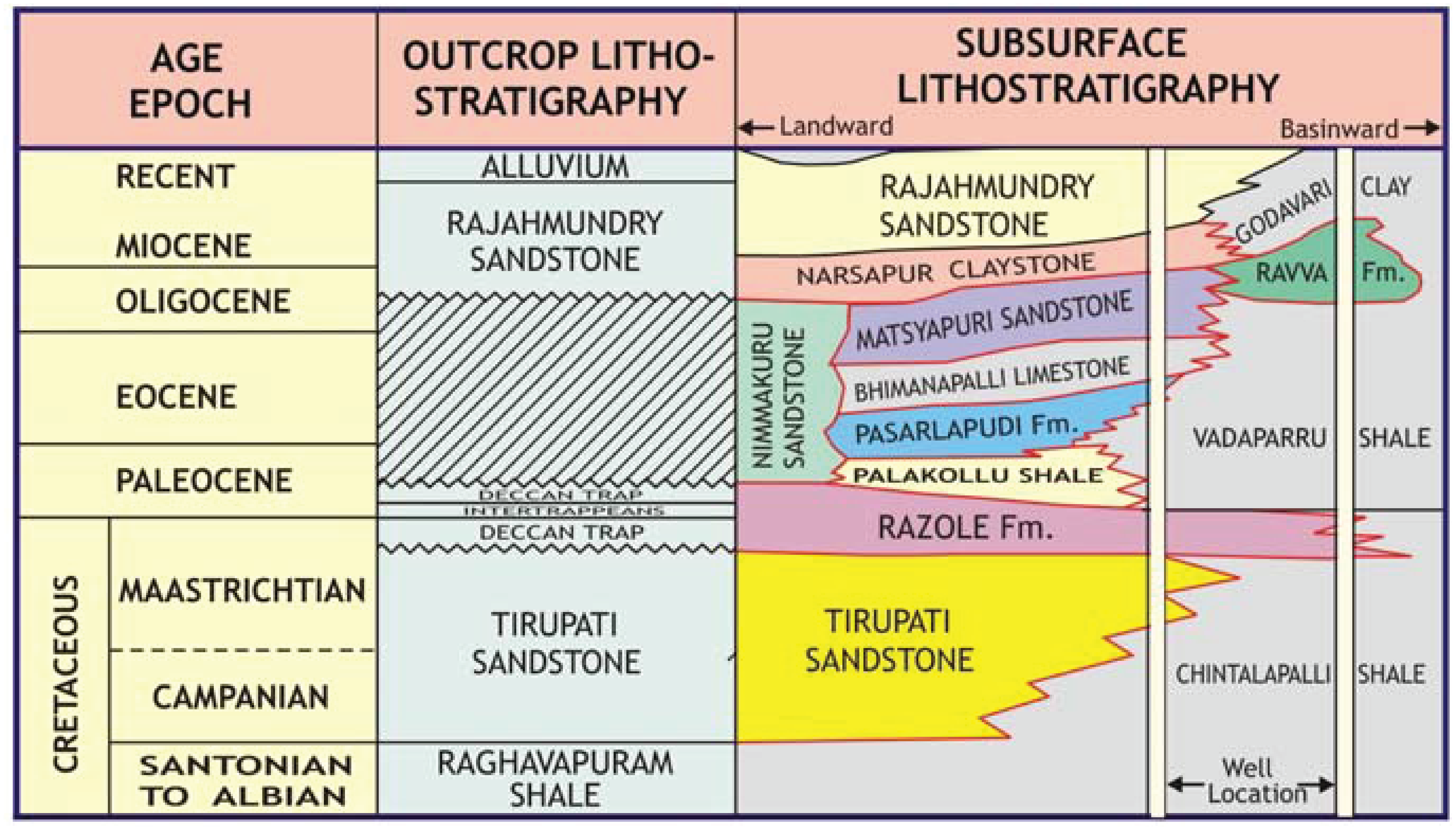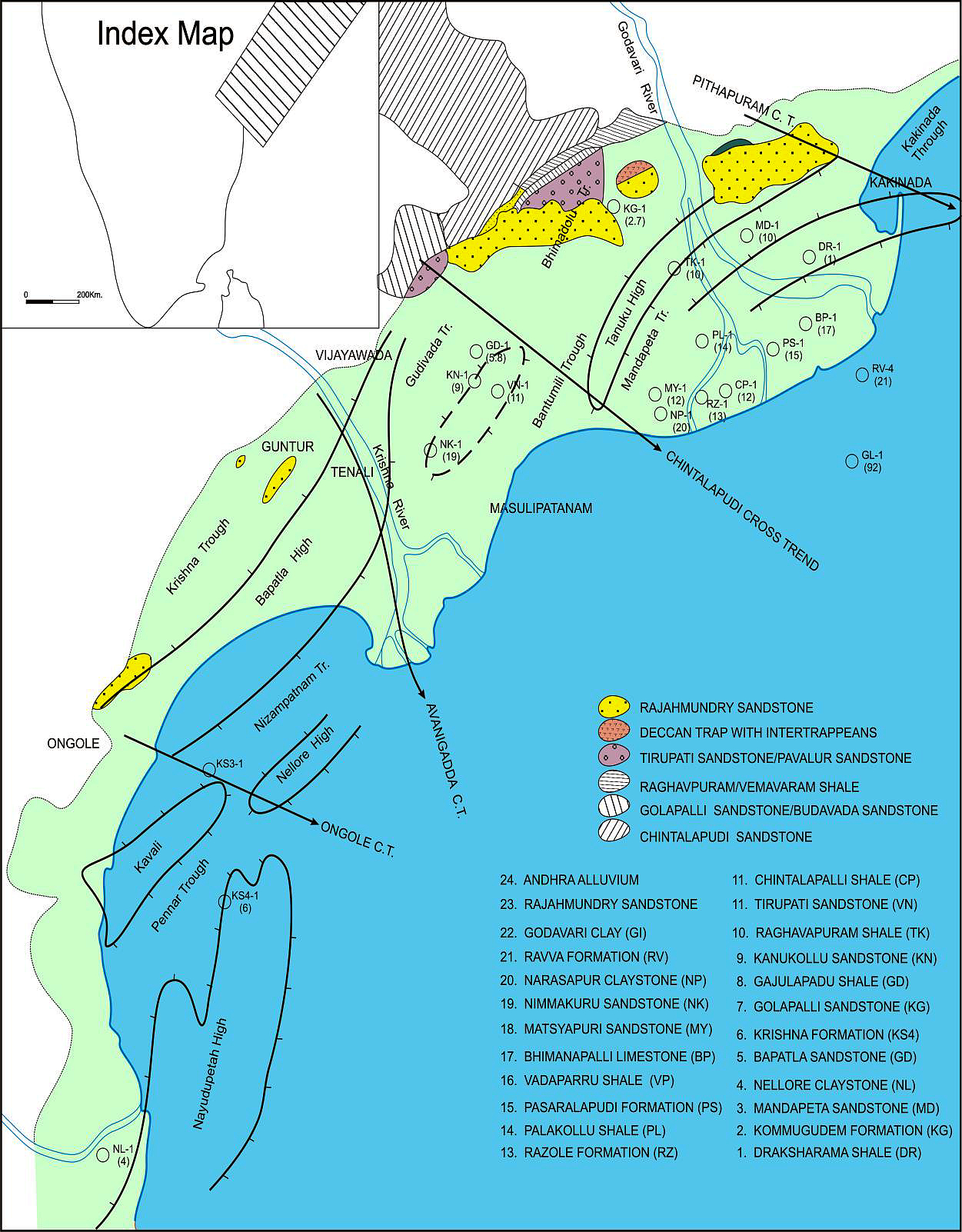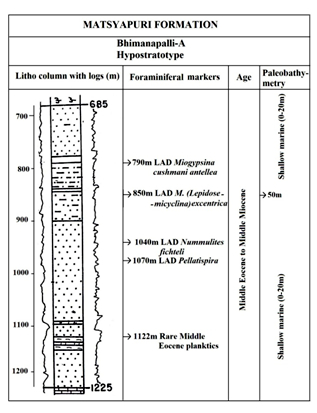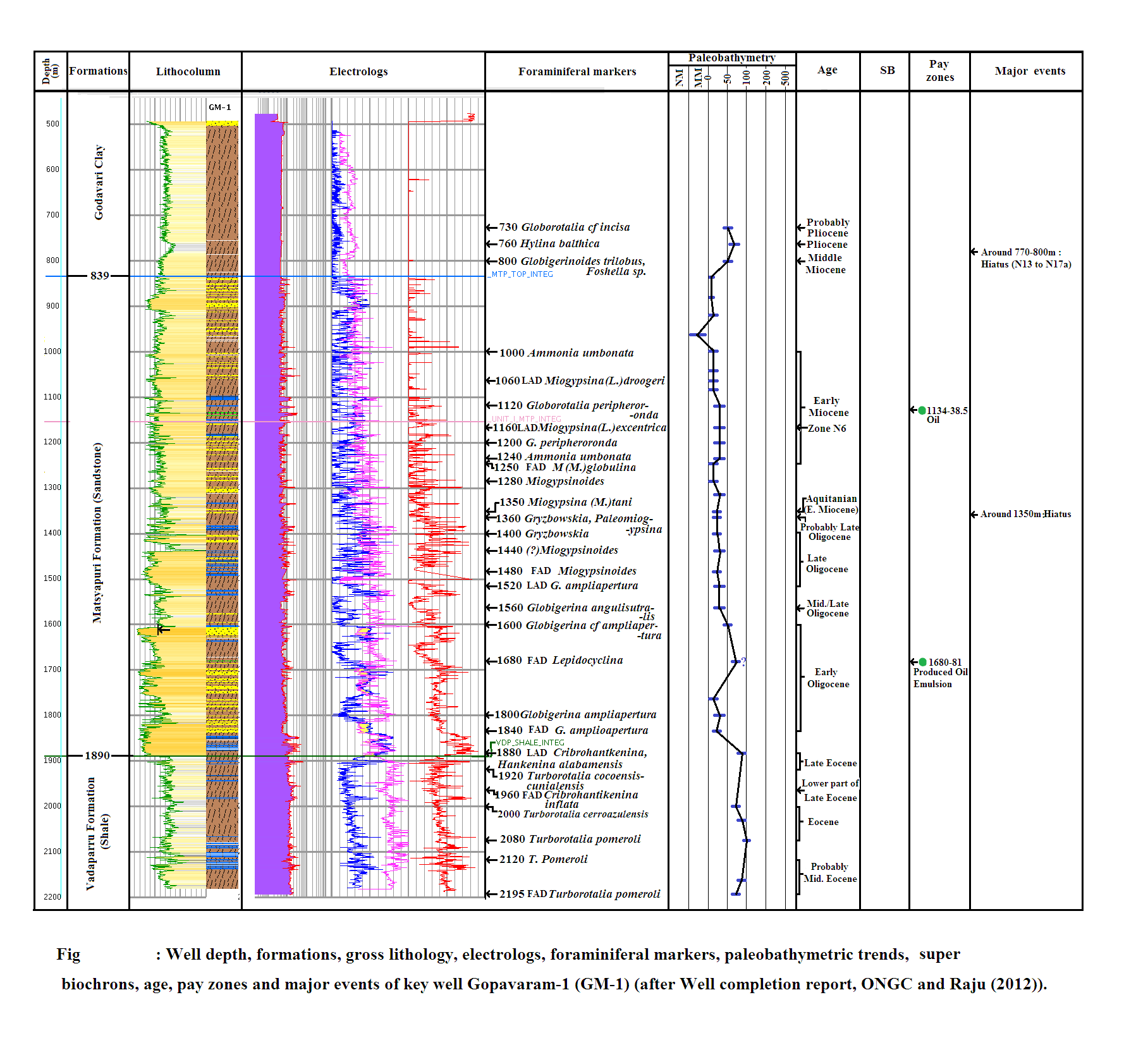Matsyapuri Fm
Type Locality and Naming
LANDWARD: Named after the village Matsyapuri. Type section is in the Well Matsyapuri-A (depth interval: 1090-1782 m), with thickness 692 m. [Original Publication: Rao, G.N. (1990) Subsurface stratigraphic nomenclature of Krishna-Godavari Basin, ONGC, unpublished report.]. Reference well: Well Bhimanapalli-A, Interval 685-1225 m and thickness is 540m.
Synonyms: Matsyapuri Sandstone
[Figure: Generalized Late Cretaceous-Cenozoic lithostratigraphy transect, Krishna-Godavari Basin. From Keller et al., 2011, Jour. Geol. Soc. India, 78:399-428, their Fig. 2]
[Figure: Map showing the locations of designated holostratotype section for the formation in the KG Basin (After ONGC, Pandey and Dave, 1998) in Raju et al., 2021, ONGC Bulletin, Special Issue, Vol. 56, No. 2]
Lithology and Thickness
Coarse-grained sandstone. In the type section Matsyapuri-A, this formation consists mainly of sandstone with thin beds of claystone and limestone. The sandstones are dark grey to greenish, coarse- to very coarse-grained, moderately sorted, subrounded with thin beds of dark grey carbonaceous claystone. Traces of pyrite at places with calcareous matrix occur. Reference section consists mainly sandstone with few claystone bands. The sandstone is light grey to brown, medium- to very coarse-grained, moderately sorted. The claystone is black, feebly calcareous and carbonaceous. The thickness of the formation in Matsyapuri-A is 692 m and in Bhimanapalli-A 540 m. The thickness of the formation is maximum near GS-18-A well where it is 1200 m.
[Figure 1: Well log of Matsyapuri-A Holostratotype (modified after Venkatarengan et al., 1993)]
[Figure 2: Well log of Bhimanapalli-A Hypostratotype (modified after Venkatarengan et al., 1993)]
Relationships and Distribution
Lower contact
The lower boundary of this formation has conformable relationship with Bhimanapalli Fm limestone.
Upper contact
The upper boundary is conformable with Narasapur Fm claystone.
Regional extent
GeoJSON
Fossils
Foraminifera are better represented in the reference section. Important events include LAD Miogypsina cushmani antillea at 790 m, LAD M (Lepidocyclina) excentrica at 850 m, LAD Nummulites fichteli at 1040 m and LAD Pellatispira at 1070 m. In between these, several larger foraminifera occur.
Age
Depositional setting
This succession is deposited under shallow marine condition with a bathymetry between 0-20 m, except at 850 m, where a bathymetry of 50 m might have been attained.
Additional Information
[Figure 3: Lithocolumn, well logs, foraminiferal datums and paleobathymetry of Matsyapuri Fm in well GM-A showing lateral variation (after well completion report, ONGC and Raju (2013)]




